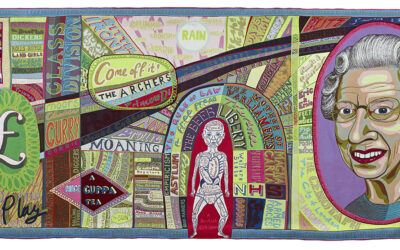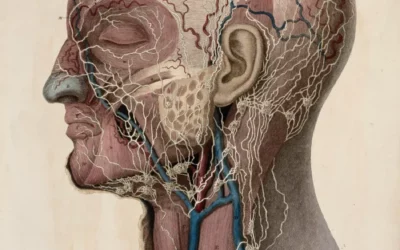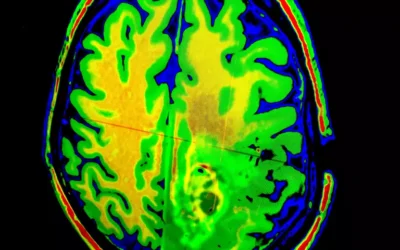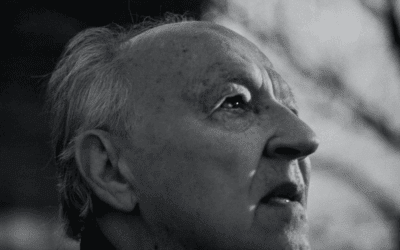The body keeps score not only of personal trauma but of economic violence, carrying in its tissues and nervous system the accumulated impact of life under various forms of capitalism. Each economic system inscribes itself somatically, creating characteristic holding patterns, chronic activation states, and embodied defenses that reveal themselves in clinical practice. When we examine how economic pressures manifest somatically, we discover that capitalism literally lives in our bodies, shaping our musculature, nervous system activation, and capacity for presence. The National Institutes of Health research on stress and health documents these patterns without recognizing them as specifically economic somatization.
The neoliberal body presents with characteristic hypervigilance, chronic sympathetic activation, and inability to access parasympathetic rest states. These bodies arrive in therapy wired for constant productivity, unable to distinguish between rest and laziness, relaxation and worthlessness. The Polyvagal Theory research of Stephen Porges explains the neurobiological mechanisms without addressing how specific economic systems shape nervous system development and regulation.
Consider the somatic profile of the gig economy worker: shallow breathing from constant app notification anxiety, forward head posture from phone checking, chronic neck and shoulder tension from maintaining readiness to respond. Their bodies exist in perpetual activation, ready to accept the next ride, delivery, or task. The nervous system never fully downregulates because economic survival depends on constant availability. The supposed freedom of gig work inscribes itself as chronic tension patterns that physical therapists and massage practitioners see daily without recognizing their economic etiology.
The Amazon warehouse worker’s body tells a different story of economic inscription. Repetitive strain injuries from scanning thousands of packages, chronic lower back pain from lifting quotas that prioritize efficiency over ergonomics, bladder problems from restricted bathroom access. The Occupational Safety and Health Administration data documents injury patterns without recognizing them as capitalism literally breaking bodies in service of profit. These workers develop what we might call “efficiency body,” optimized for production at the cost of sustainable human functioning.
Class manifests somatically in ways that transcend individual psychology. The working-class body often carries chronic inflammation from stress, processed food, and environmental toxins that poverty makes unavoidable. The tension between needing to appear strong for physical labor while managing chronic pain creates characteristic armoring patterns. The American Journal of Public Health research on health disparities documents these patterns without recognizing them as class made flesh.
Upper-class bodies show different but equally revealing patterns. The executive’s body often presents with thoracic rigidity from maintaining professional composure, chronic jaw tension from suppressed emotion, and disconnection from lower body sensation. These bodies have learned to override somatic signals in service of productivity, creating what Wilhelm Reich called “character armor” that maintains class position through bodily rigidity. The Harvard Business Review’s coverage of executive health misses how leadership under capitalism requires specific somatic adaptations.
The student debt body manifests as chronic contraction, particularly in the chest and shoulders, as if carrying invisible weight. Young adults describe feeling physically crushed by debt, and their bodies reflect this through collapsed posture, restricted breathing, and chronic fatigue that doesn’t respond to rest. The nervous system maintains a background anxiety hum that never fully resolves because the debt never stops accruing interest. Sleep disorders are endemic among student debtors, their bodies unable to access the rest that would require feeling safe from economic threat.
Women’s bodies under capitalism carry the double burden of productive and reproductive labor, manifesting as characteristic patterns of depletion and hypervigilance. The working mother’s body shows chronic activation from managing both workplace demands and domestic responsibilities. The UN Women’s data on unpaid care work documents the hours without recognizing the somatic cost of this double shift. These bodies often present with autoimmune conditions, the soma attacking itself under unsustainable pressure.
The financialized body lives in temporal displacement, always projected into future profit or loss rather than present sensation. Day traders develop characteristic patterns: chronic eye strain from screen watching, carpal tunnel from repetitive clicking, and a peculiar form of dissociation where the body becomes merely a support system for the trading mind. Their nervous systems sync to market volatility, with heart rate variability tracking index fluctuations. The Journal of Behavioral Finance documents trading behaviors without recognizing their somatic dimensions.
Unemployment creates its own somatic signature: the collapse that follows chronic job searching, the hypervigilance of waiting for responses, the shame that settles into the tissues. The unemployed body often presents with contradictory patterns of agitation and depletion, unable to rest but too exhausted to act. The International Labour Organization’s research on unemployment tracks statistics without recognizing unemployment as a somatic crisis.
The entrepreneur’s body embodies the contradiction of “following your passion” under capitalism. These bodies show patterns of manic activation alternating with collapse, unable to maintain sustainable rhythm. The glorification of hustle creates bodies that interpret rest as failure, sensation as distraction from the mission. Startup founders often present with adrenal exhaustion, their bodies depleted from running on stress hormones and coffee. The mythology of the entrepreneur who “doesn’t need sleep” creates bodies that have forgotten how to sleep.
Racial capitalism inscribes itself through specific traumas that compound across generations. Black and brown bodies carry not only present economic stress but ancestral trauma from slavery, colonialism, and ongoing structural violence. The American Journal of Public Health’s research on racial health disparities documents outcomes without recognizing them as embodied racial capitalism. These bodies must maintain vigilance against both economic and racial violence, creating complex trauma patterns that standard somatic approaches often fail to address.
The child’s body under capitalism begins adapting early. School becomes training for workplace discipline, teaching bodies to remain still, suppress impulses, and respond to bells. The Centers for Disease Control data on childhood obesity and mental health documents concerning trends without recognizing them as children’s bodies adapting to capitalist conditioning. ADHD diagnoses often pathologize bodies that resist this conditioning, medicating children into compliance with economic demands for stillness and focus.
Service workers develop what we might call “customer service body,” maintaining perpetual smile despite internal distress. The emotional labor of service work creates specific tension patterns: chronic facial muscle fatigue from forced smiling, suppressed fight responses that settle into the shoulders and arms, dissociation from authentic emotion. The “service with a smile” mandate creates bodies split between performance and truth, a somatic double consciousness that exhausts the nervous system.
The retiree’s body often goes through profound somatic crisis as economic productivity ends. Bodies organized around work struggle to reorganize around being. Many retirees experience depression, anxiety, and physical decline not from aging but from somatic identity crisis as their bodies lose their economic function. The National Institute on Aging research documents health changes in retirement without recognizing them as bodies struggling to exist outside economic definition.
Healthcare workers embody the contradiction of caring professions under capitalism. These bodies must maintain empathic attunement while processing industrial quantities of suffering. The American Medical Association’s data on physician burnout documents epidemic exhaustion without recognizing it as bodies breaking under capitalism’s transformation of care into commodity. Nurses’ bodies show chronic patterns from lifting beyond capacity, standing beyond endurance, and witnessing suffering without time to process.
The tech worker’s body adapts to digital capitalism through specific modifications: forward head posture from screen work, chronic eye strain from blue light exposure, “tech neck” from device use. But beyond these mechanical adaptations, these bodies show nervous system modifications from constant connectivity. The Sleep Foundation’s research on technology and sleep documents disruption without recognizing it as bodies struggling to adapt to digital capital’s 24/7 demands.
Agricultural workers’ bodies under industrial capitalism show patterns distinct from traditional farming. The repetitive motions of industrial agriculture, exposure to pesticides, and pressure for speed create bodies that break down predictably. The National Farm Worker Ministry data documents conditions without recognizing how industrial agriculture literally consumes human bodies as another input to production.
Sex workers’ bodies navigate the complex intersection of capitalism and patriarchy, maintaining boundaries while performing intimacy, protecting themselves while appearing vulnerable. These bodies develop sophisticated somatic strategies for managing safety and dissociation that therapy often pathologizes rather than recognizing as adaptive responses to doing body work under capitalism.
The somatic impact of economic inequality manifests as what researchers call “biological embedding” of social position. Poverty literally changes genetic expression through epigenetic modifications, altering how bodies develop and function. The Proceedings of the National Academy of Sciences research on poverty and genetics documents these changes without recognizing them as capitalism encoding itself into DNA.
Therapeutic approaches that ignore economic somatization risk perpetuating the very patterns they claim to heal. Teaching “stress management” without addressing economic sources of stress, promoting “self-care” without acknowledging that care has been commodified, offering “mindfulness” as solution to systemic exploitation. The critical psychology research on therapeutic complicity challenges these approaches without fully developing economic somatic analysis.
Understanding the somatic cost of capital reveals that economic justice is a body issue. We cannot heal bodies without addressing the economic systems that shape them. This requires somatic practices that recognize economic trauma, therapeutic approaches that address systemic as well as personal patterns, and ultimately, economic transformations that allow bodies to exist without constant threat and activation.
The question becomes: what would bodies feel like under different economic systems? How might we inhabit our soma if not constantly activated by economic anxiety? What holding patterns would release if bodies felt economically secure? What new capacities might emerge if our nervous systems weren’t organized around survival under capitalism?
Moving toward economic systems that support somatic wellbeing requires recognizing that the body is not separate from economic life but rather the primary site where economics happens. Every economic policy is a somatic intervention, every market mechanism a nervous system modifier. When we understand economics somatically, we see that the market doesn’t just distribute resources but shapes how we inhabit our own flesh.
The path forward requires developing somatic practices that address economic trauma directly, creating therapeutic spaces that recognize class and economic pressures as primary shapers of embodiment, and ultimately transforming economic systems to support sustainable somatic existence. Bodies know what minds might deny: that current economic systems are unsustainable not just environmentally but somatically. The epidemic of chronic illness, mental health crisis, and somatic dysregulation are bodies telling us that capitalism is literally making us sick.
Our bodies carry the truth that economic systems would prefer to deny: that human beings are not infinitely flexible resources for capital extraction but living systems with limits, needs, and intrinsic worth beyond productivity. The somatic cost of capital is not a side effect but central to how these systems function. Recognizing this opens possibility for both therapeutic intervention and economic transformation that honors the body’s wisdom about what sustainable economic life might actually feel like.



























0 Comments